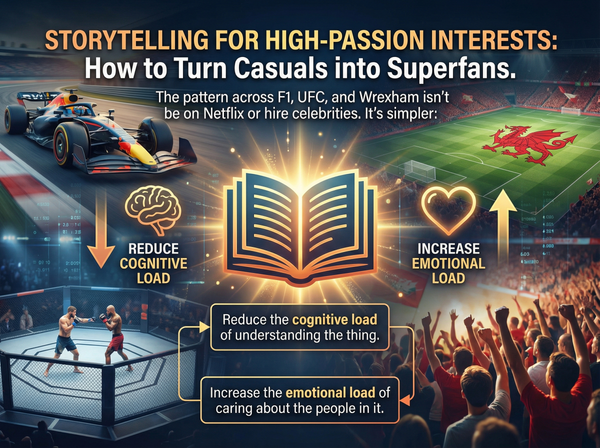The Complete Guide to Meta Ads: A Full-Funnel Strategy
Meta Ads (Facebook Ads) represent one of the most sophisticated advertising platforms available today. Yet most businesses barely scratch the surface, treating them as glorified boost post buttons.
The difference between amateur advertisers and professionals isn't just budget—it's strategy.
This comprehensive guide will walk you through a proven full-funnel approach.
Why Most Meta Ads Fail (And How to Avoid These Mistakes)
Before diving into strategy, let's address the elephant in the room. Most Meta ad campaigns fail because they:
- Target everyone instead of the right someone
- Use the same creative for different audience stages
- Focus on vanity metrics instead of business outcomes
- Lack proper audience exclusions, leading to wasted spend
The solution? A systematic, full-funnel approach that meets customers where they are in their journey.
The Full-Funnel Framework: Your Strategic Blueprint
The full-funnel approach recognizes a fundamental truth: not every user is ready to buy the moment they see your ad. Instead, you segment your audience based on their relationship with your brand and serve them content tailored to their position in the customer journey.
Think of it as a conversation. You wouldn't propose marriage on a first date, so why would you ask for a sale from someone who's never heard of your brand?
Top of Funnel (ToFu): The Prospecting Phase
Objective: Brand awareness and generating initial interest among new audiences.
At this stage, you're casting a wide net to reach potential customers who don't know your brand exists. Your goal is to make a memorable first impression and start building relationships.
Audience Strategies
Broad Targeting Use minimal targeting options (location, age, gender) and let Meta's machine learning algorithms find your ideal customers. This approach works exceptionally well when you have strong creative assets that can stand on their own merit.
Meta's algorithms have access to thousands of data points about user behavior. Trust the system, but always test against more specific targeting to find your sweet spot.
Interest-Based Targeting Target users based on their demonstrated interests, pages they've liked, and behaviors. For example, a specialty coffee brand might target people interested in third-wave coffee, espresso machines, or artisan roasting.
Lookalike Audiences: Your Secret Weapon This is prospecting gold. Upload a seed audience of your best customers, highest-value purchasers, or most engaged users, and Meta finds similar people. A 1% Lookalike Audience most closely resembles your source, while 10% casts a broader net.
Best practice: Test multiple seed audiences (customers vs. engaged users vs. high-value customers) and different percentages to optimize performance.
Creative Strategies
Video Ads Perfect for storytelling and quickly communicating your unique value proposition. Keep them under 15 seconds for optimal performance, with a hook in the first 3 seconds.
Carousel Ads Ideal for showcasing product collections or telling a sequential story. Each card should be able to stand alone while contributing to the overall narrative.
Static Images High-quality, scroll-stopping visuals that create immediate impact. Use bright colors, clear text overlays, and compelling visual hooks.
Key Performance Indicators
- Reach & Impressions: Your awareness metrics
- Cost Per Thousand Impressions (CPM): Lower CPMs indicate efficient targeting
- Post Engagement Rate: High engagement suggests creative resonance
- Video View Rate: Especially important for video content
- Brand Awareness Lift: Available through Meta's brand surveys
Middle of Funnel (MoFu): The Retargeting Phase
Objective: Nurture interested prospects and move them toward a purchase decision.
You're now speaking to warm audiences who have already shown interest in your brand. These people are significantly more likely to convert, making this your highest-ROI opportunity.
Custom Audience Strategies
Website Traffic Retargeting Segment visitors by recency (7, 30, 90 days) and behavior (specific pages visited, time on site). Someone who visited your pricing page is closer to purchase than someone who only read a blog post.
Video Engagement Audiences Target users who watched 25%, 50%, 75%, or 95% of your videos. The higher the completion rate, the more engaged the audience.
Social Media Engagement Re-engage people who have interacted with your Facebook page, Instagram account, or specific posts. These audiences often have lower costs and higher engagement rates.
Email List Retargeting Upload your customer and prospect email lists to create Custom Audiences. This bridges your email marketing and paid social efforts.
Creative Strategies
Dynamic Product Ads Show users the exact products they viewed on your website. For e-commerce businesses, this is often the highest-converting ad format.
Social Proof Campaigns Feature customer testimonials, reviews, case studies, or user-generated content. Social proof addresses objections and builds trust at scale.
Educational Content How-to guides, tutorials, or content that helps prospects get the most value from your product category. This positions you as an expert while keeping your brand top-of-mind.
Key Performance Indicators
- Click-Through Rate (CTR): Should be higher than ToFu campaigns
- Cost Per Click (CPC): Typically lower due to audience warmth
- Ad Frequency: Monitor to prevent ad fatigue (keep under 5 for most campaigns)
- Landing Page View Rate: Measures ad-to-site experience quality
Bottom of Funnel (BoFu): The Conversion Phase
Objective: Convert interested prospects into paying customers.
You're now speaking to people who are on the verge of making a purchase. Every element should be optimized for conversion.
High-Intent Audience Strategies
Cart Abandoners Your most valuable retargeting audience. These people have already decided they want your product—they just need the final push.
Repeat Website Visitors People who have visited multiple times but haven't purchased are showing strong buying signals.
High-Value Page Visitors Those who viewed pricing pages, product details, or spent significant time on your site.
Conversion-Focused Creative
Urgency and Scarcity Limited stock remaining, Sale ends tonight, or Your cart expires in 2 hours.
Final Incentives Free shipping, exclusive discounts, or bonus items can provide the final nudge needed to complete a purchase.
Trust Signals Money-back guarantees, security badges, customer count, or press mentions help overcome final objections.
Key Performance Indicators
- Return on Ad Spend (ROAS): Your north star metric
- Cost Per Acquisition (CPA): Must align with your unit economics
- Purchase Conversion Rate: From click to sale
- Average Order Value: Higher AOV improves campaign profitability
Advanced Strategy: Exclusions
One of the most overlooked aspects of Meta advertising is what you don't show ads to. Strategic exclusions can dramatically improve campaign efficiency.
Essential Exclusion Strategies
Exclude Existing Customers from Prospecting Never pay to acquire customers you already have. Always exclude your customer list from top-of-funnel campaigns.
Exclude Recent Purchasers from Retargeting Remove people who bought in the last 30-90 days from general retargeting campaigns (unless running specific retention campaigns).
Frequency-Based Exclusions Exclude users who have seen your ads too many times to prevent ad fatigue and maintain campaign efficiency.
Geographic Exclusions Exclude locations where you don't ship or provide services to avoid wasted impressions.
Advanced Metrics: What Pros Actually Track
Revenue Metrics
- Return on Ad Spend (ROAS): Revenue ÷ Ad Spend. Minimum viable ROAS varies by industry and margins.
- Customer Lifetime Value (LTV): Total revenue expected from a customer over their relationship with your brand.
- LTV:CAC Ratio: Lifetime Value ÷ Customer Acquisition Cost. Aim for 3:1 minimum.
Efficiency Metrics
- Blended ROAS: Includes organic traffic that may have been influenced by ads.
- New Customer Rate: Percentage of conversions from first-time customers.
- Incrementality: Revenue that wouldn't have occurred without advertising.
Leading Indicators
- Cost Per Landing Page View: Predicts future conversion costs.
- Add to Cart Rate: Early signal of campaign health.
- Email Signup Rate: Builds owned audiences for future retargeting.
The Bottom Line
Success with Meta Ads isn't about having the biggest budget - it's about having the smartest strategy. By implementing this full-funnel approach, properly excluding irrelevant audiences, and focusing on the metrics that drive business growth, you'll build a advertising machine that consistently delivers profitable results.
Keep Crushing!
- Sales Guy


